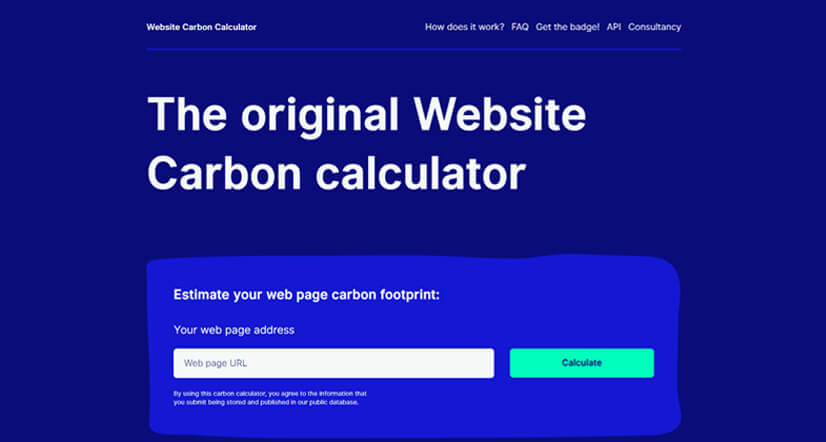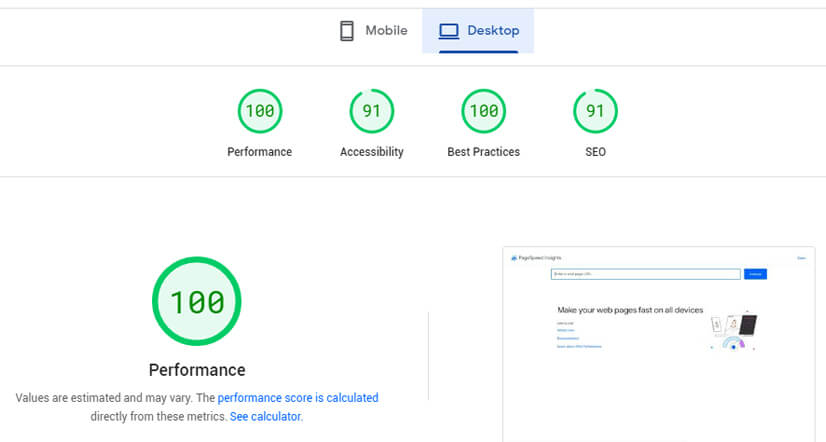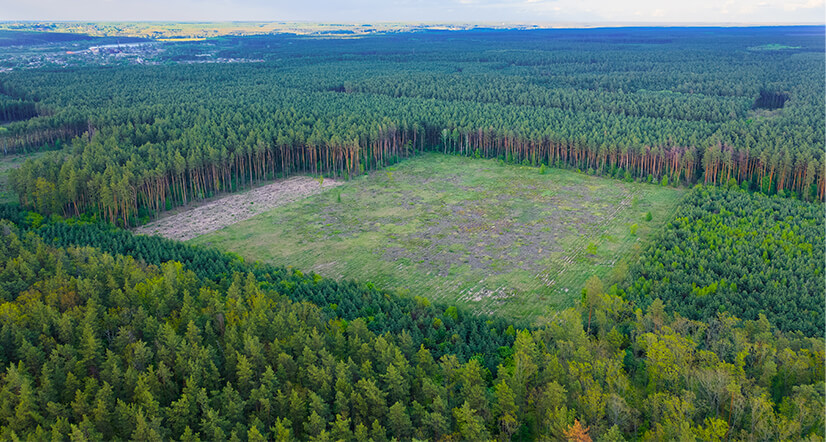What is Eco Hosting?
Eco hosting is a type of web hosting that focuses on sustainability and minimising the environmental impact of hosting websites.
As the use of the internet continues to grow at an unprecedented rate, it is increasingly important for businesses and individuals to consider the environmental impact of their online activities.
By choosing eco website hosting, businesses and individuals can do their part to reduce their carbon footprint and support the transition to a more sustainable future.
Energy Efficient Servers
One of the main goals of eco hosting is to reduce the amount of energy required to power and cool servers, which can be a significant source of carbon emissions in the hosting industry.
To achieve this, eco web hosting providers may use a variety of techniques, such as using energy-efficient servers / hardware, implementing measures to improve airflow and also improve cooling in data centres.
Renewable Energy Sources
A key advantage of eco website hosting is that it uses renewable energy sources to power the servers and other infrastructure used to host websites. Traditional web hosting packages rely on non-renewable energy sources such as coal and natural gas, which contribute to climate change and other environmental problems.
Eco website hosting, on the other hand, uses renewable energy sources such as solar and wind power to power its servers. This not only reduces the environmental impact of hosting websites, but also supports the growth of renewable energy industries.
Recycling Hardware
In addition to reducing energy consumption, eco hosting providers may also focus on reducing waste and minimising the environmental impact of their operations. This can include implementing recycling programs for electronic waste, using biodegradable packaging materials, and working with suppliers who are committed to sustainable practices.
Energy-efficient Practices
Another advantage of eco website hosting is that it often employs energy-efficient technologies and practices. Hosting companies can implement energy-saving strategies, such as turning off servers when they are not in use or using power management systems to regulate the power usage of servers and other equipment.
Use energy-efficient lighting and appliances: Hosting companies can use energy-efficient lighting and appliances in their offices and data centres to further reduce energy consumption.
Green web hosting providers often employ practices such as virtualisation and server consolidation, which can help to reduce the amount of energy needed to host websites.
Virtualisation
Virtualisation is a technique that allows a single physical server to run multiple virtual servers, each with its own operating system and applications. This enables organisations to make more efficient use of their hardware resources, as they can run multiple virtual servers on a single physical server, rather than having to provision a separate physical server for each application.
Server Consolidation
Server consolidation is the process of combining multiple physical servers into a single physical server or a cluster of servers, using virtualisation technology. By consolidating servers, organisations can reduce their hardware and maintenance costs, as well as the energy consumption and carbon emissions associated with running multiple servers.
Other Energy-Efficient Technologies
There are a number of technologies that can help to improve the energy efficiency of servers and other data centre equipment. These include:
1. Power-efficient processors: Modern processors are designed to use less power, which can help to reduce energy consumption in servers.
2. Solid state drives (SSD storage): SSDs are faster and more power-efficient than traditional hard disk drives (HDDs), making them a good choice for use in servers.
3. Liquid cooling: Traditional air cooling systems can be inefficient and contribute to energy waste in data centres. Liquid cooling systems use water or other fluids to dissipate heat, which can be more efficient and effective at cooling servers.
4. Uninterruptible power supplies (UPS): UPS systems can help to protect servers from power outages and surges, and can also be designed to be more energy-efficient.
Save Money with Eco Hosting
Eco website hosting also provides economic benefits. By using renewable energy sources and energy-efficient technologies, eco website hosting providers are able to offer their services at a lower cost than traditional web hosting UK providers.
This means that businesses and individuals can save money on their web hosting costs while also supporting the transition to a more sustainable future.
Environmentally Conscious Public Image
Furthermore, eco website hosting can help businesses and individuals to improve their public image and attract environmentally conscious consumers.
In today’s world, consumers are increasingly concerned about the environmental impact of the products and services they use. By choosing eco website hosting, businesses and individuals can demonstrate their commitment to sustainability and attract environmentally conscious consumers.
Transparency and Accountability
Another important aspect of eco hosting is transparency and accountability. Eco hosting providers may publish regular reports detailing their environmental impact and sustainability efforts, and may also seek certification from third-party organisations to verify their commitment to sustainable practices.
Transparency and accountability are important because they help to build trust, increase efficiency, and ensure that an organisation is operating in an ethical and responsible manner.
Eco website hosting is the future of green web sustainability. By using renewable energy sources and energy-efficient technologies, eco website hosting providers are able to offer their services at a lower cost while also reducing their environmental impact. This makes eco website hosting an attractive option for businesses and individuals who are looking to do their part to support the transition to a more sustainable future.
Does having a green website really have an impact on carbon footprint?
Yes, having a green website can have a significant impact on a website’s carbon footprint. By implementing eco-friendly web hosting and energy-efficient technologies and practices, businesses and individuals can reduce the energy usage and carbon emissions associated with their website.
Is there any science behind this?
There is scientific evidence to support the effectiveness of these measures in reducing a website’s carbon footprint. For example, a study published in the Journal of Cleaner Production found that the use of renewable energy sources and energy-efficient technologies in WordPress hosting can significantly reduce a website’s carbon footprint.
Research published on eco hosting:
There has been a growing body of research published on eco website hosting in recent years, as the environmental impacts of the hosting industry have come under increasing scrutiny. Some examples of research on eco hosting include:
“Eco-Hosting: A Review of Environmental Sustainability in the Web Hosting Industry” by E. Wahlberg and M. Wiberg, published in the Journal of Cleaner Production in 2016, which reviews the environmental impacts of the hosting industry and discusses sustainable practices that hosting companies can implement to reduce their environmental footprint.
“Towards Eco-Hosting: A Review of Environmental Sustainability in Cloud Computing” by E. Wahlberg and M. Wiberg, published in the Journal of Cleaner Production in 2016, which examines the environmental impacts of cloud computing and discusses ways in which the industry can become more sustainable.
“Green Web Hosting: A Review of Environmental Sustainability in the Web Hosting Industry” by E. Wahlberg, M. Wiberg, and P. Danielsson, published in the Journal of Cleaner Production in 2017.
“Sustainable Web Hosting: A Review of Environmental Sustainability in the Reseller Hosting Industry” by E. Wahlberg, M. Wiberg, and P. Danielsson, published in the Journal of Cleaner Production in 2018.
How To Measure Your Website's Carbon Footprint
The carbon footprint of a website can be measured by considering the carbon emissions associated with the various stages of a website’s life cycle, from its creation to its ongoing operation and maintenance. This includes emissions associated with the energy used to power the servers and other infrastructure used to host the website, the energy used to create and update the website’s content, and the emissions associated with the transportation of data to and from the website.
Website Carbon Calculator
To measure the carbon footprint of a website, one can use a tool such as the Website Carbon Calculator, which is provided by the Environmental Defense Fund. This tool allows users to input information about their website, including the amount of data transferred, the type of hosting used, and the number of visitors to the site, and it calculates the website’s carbon footprint based on this information.
Alternatively, the carbon footprint of a website can be estimated by considering the emissions associated with the electricity used to power the servers and other infrastructure used to host the website. This can be calculated by considering the amount of electricity used by the servers and other infrastructure, the source of the electricity (e.g. coal, natural gas, wind, solar), and the carbon emissions associated with the generation of this electricity.
Measuring the carbon footprint of a website is an important step in understanding the environmental impact of a website and taking steps to reduce this impact. By using tools such as the Website Carbon Calculator, businesses and individuals can better understand the emissions associated with their website and take steps to reduce their carbon footprint.
9 Ways To Make Your Website Eco Friendly
It is as simple as to use eco-friendly web hosting! Eco-friendly web hosting is a sustainable way to host a website. Powered by renewable energy sources and energy-efficient technologies, eco-friendly web hosting providers can reduce the environmental impact of hosting websites.
1. Optimise website design for energy efficiency: Websites that are designed with energy efficiency in mind can use less energy to load and operate. When re-designing or creating a new website, it is important for the
web design agency to implement website guidelines for sustainability.
This can be achieved through techniques such as optimising images and other media to reduce file sizes, using caching to reduce the number of requests to the server, and reducing the number of plugins and other third-party scripts used on the website. There are a number of amazing cache plugins e.g WP Rocket which can help you.
Test your website with Googles own PageSpeed Insights: Google PageSpeed Insights. It will list recommendations you can make to your website which coincides with making your website more eco friendly.
2. Use renewable energy to power office and server infrastructure: In addition to using eco-friendly web hosting, businesses can also use renewable energy sources to power their office and server infrastructure. This can include installing solar panels on the roof or using wind power to generate electricity.
3. Implement virtualisation and server consolidation: Virtualisation and server consolidation are techniques that can help to reduce the amount of energy required to host a website. Virtualisation involves running multiple virtual machines on a single physical server, while server consolidation involves combining multiple physical servers into a single virtual server.
4. Use energy-efficient hardware: Choosing energy-efficient hardware can help to reduce the environmental impact of hosting a website. This includes selecting servers and other hardware that are designed to be energy-efficient, and implementing power-saving features such as power management and sleep modes.
5. Implement green IT policies: Developing and implementing green IT policies can help businesses to reduce their environmental impact. This can include policies such as using double-sided printing, purchasing recycled paper, and turning off office equipment when not in use.
6. Use eco-friendly marketing and advertising: Businesses can also reduce their environmental impact through the way they market and advertise their products and services. This can include using eco-friendly materials such as recycled paper and biodegradable plastics, and implementing digital marketing strategies that reduce the need for physical materials.
7. Support carbon offsetting initiatives: Carbon offsetting is a way to compensate for the carbon emissions associated with a website by supporting projects that reduce carbon emissions elsewhere. This can include projects such as planting trees, installing renewable energy infrastructure, and supporting energy-efficiency initiatives.
8. Educate employees about sustainability:Educating employees about sustainability and the environmental impact of their work can help to promote eco-friendly practices within a business. This can include training on green IT policies, eco-friendly web hosting, and other sustainable practices.
9. Choose suppliers and partners who are committed to sustainability: Finally, businesses can support sustainability by choosing suppliers and partners who are committed to reducing their environmental impact. This can include choosing suppliers who use eco-friendly materials and practices, and partnering with organisations that are dedicated to promoting sustainability.
Dedicated or Shared Hosting: Which is Better for Web Sustainability?
In terms of web sustainability, it is generally better to be on a dedicated server rather than a shared server. This is because a dedicated server allows the user to have full control over the server’s resources and energy usage, whereas a shared hosting splits the server’s resources and energy usage among multiple users.
On a dedicated server, the user can choose to use eco-friendly web hosting packages and implement energy-efficient technologies and practices to reduce the server’s energy usage and carbon emissions. This is not possible on a shared server, as the server’s resources and energy usage are controlled by the server provider and shared among multiple users.
A dedicated server allows the user to optimise the server’s configuration and settings for their specific website and needs, which can further improve the server’s energy efficiency. On a shared server, the server’s configuration and settings are determined by the server provider and may not be optimised for the user’s specific website and needs.
While a shared server may be a more cost-effective option, a dedicated server offers greater control and flexibility in terms of web sustainability. By using a dedicated server, businesses and individuals can take steps to reduce their server’s energy usage and carbon emissions, and support the transition to a more sustainable web.
Let Your Visitors Know You Are a Green Website Company
There are several ways that businesses and individuals can communicate to their website visitors that they are a green powered website company.
Displaying green credentials or badge: Many companies that offer eco-friendly products and services display a green logo or badge on their website to indicate their commitment to sustainability. This can be a simple way to let website visitors know that the business is a green website company.
1. Providing information about eco-friendly practices: Businesses and individuals can provide information about the eco-friendly practices they use on their website. This can include information about the renewable energy sources used to power their servers, the energy-efficient technologies and practices implemented, and the steps they are taking to reduce their carbon footprint.
2. Offering carbon offsetting: Some businesses and individuals offer carbon offsetting as a way to compensate for the carbon emissions associated with their website. This can include supporting projects such as renewable energy infrastructure or reforestation initiatives. By offering carbon offsetting, businesses and individuals can demonstrate their commitment to sustainability and allow website visitors to offset the emissions associated with their visit.
3. Partnering with eco-friendly organisations: Businesses and individuals can also communicate their commitment to sustainability by partnering with other eco-friendly businesses. This can include partnering with organisations that support renewable energy, conservation, or other sustainable initiatives. By partnering with these organisations, businesses and individuals can demonstrate their commitment to sustainability and raise awareness about eco-friendly practices.
4. Display your eco website badge proudly. Test you website on The Green Web Foundation to receive a eco friendly badge to display on your website. Have a look, PixoMarketing showcases the badge at the bottom of every page.
What Are Some Myths About Eco Hosting
Here are a few examples of myths and misconceptions surrounding eco hosting:
Myth: Eco hosting is more expensive than other types of web hosting.
Reality: While eco hosting may sometimes come with a higher price tag than traditional web hosting, this is not always the case. In fact, many eco hosting providers offer competitive pricing and may even offer discounts to customers who are committed to sustainable practices. Additionally, the long-term benefits of eco hosting – such as reduced energy costs and a smaller environmental footprint – can often outweigh the initial cost.
Myth: Eco hosting is only for businesses that are committed to sustainability.
Reality: While eco hosting can be a great option for businesses that are focused on sustainability, it is not just for these organisations. In fact, anyone can choose an eco hosting provider, regardless of their commitment to sustainability. By choosing eco hosting, individuals and businesses can reduce their environmental impact and help to protect the planet.
Myth: Eco hosting is not as reliable as other types of web hosting.
Reality: Eco hosting providers are held to the same standards of reliability and performance as other web hosting providers. In fact, many eco hosting providers use state-of-the-art technology and infrastructure to ensure that their servers are reliable and secure. Additionally, eco hosting providers may have additional measures in place to ensure the sustainability and efficiency of their operations, which can further improve reliability.
Common Mistakes Websites Make Going Eco Friendly
Here are a few common mistakes that websites make when trying to be eco-friendly:
1. Not reducing energy consumption: One of the biggest ways that websites can reduce their environmental impact is by reducing their energy consumption. This can include using energy-efficient servers and other hardware, implementing measures to improve airflow and cooling in data centres, and using renewable energy sources to power the servers.
2. Not reducing waste: Another important aspect of eco-friendliness is reducing waste. Websites can do this by implementing recycling programs for electronic waste, using biodegradable packaging materials, and working with suppliers who are committed to sustainable practices.
3. Not being transparent: In order for a website to be truly eco-friendly, it is important for the website to be transparent about its environmental impact and sustainability efforts. This can include publishing regular reports detailing the website’s environmental impact, and seeking certification from third-party organisations to verify its commitment to sustainable practices.
4. Not considering the entire lifecycle: When trying to be eco-friendly, it is important to consider the entire lifecycle of a website, from its creation to its disposal. This means thinking about the environmental impact of the website’s design and development, as well as its hosting and maintenance.
Being eco-friendly requires careful planning and consideration, and it is important for websites to avoid these common mistakes in order to truly reduce your environmental impact.
Carbon Emissions Facts
The majority of global carbon emissions come from the burning of fossil fuels, such as coal, oil, and natural gas, for energy production.
Deforestation and other forms of land use change also contribute significantly to carbon emissions, as trees and other vegetation absorb carbon dioxide from the atmosphere as they grow.
Carbon emissions can have a variety of negative effects on the environment and human health, including air pollution, climate change, and an increased risk of respiratory diseases.
Some countries and organisations have implemented carbon pricing schemes, which put a price on carbon emissions and incentivise individuals and businesses to reduce their carbon footprint.
Carbon emissions can be reduced through a variety of measures, such as improving energy efficiency, switching to renewable energy sources, and implementing conservation and reforestation efforts.






